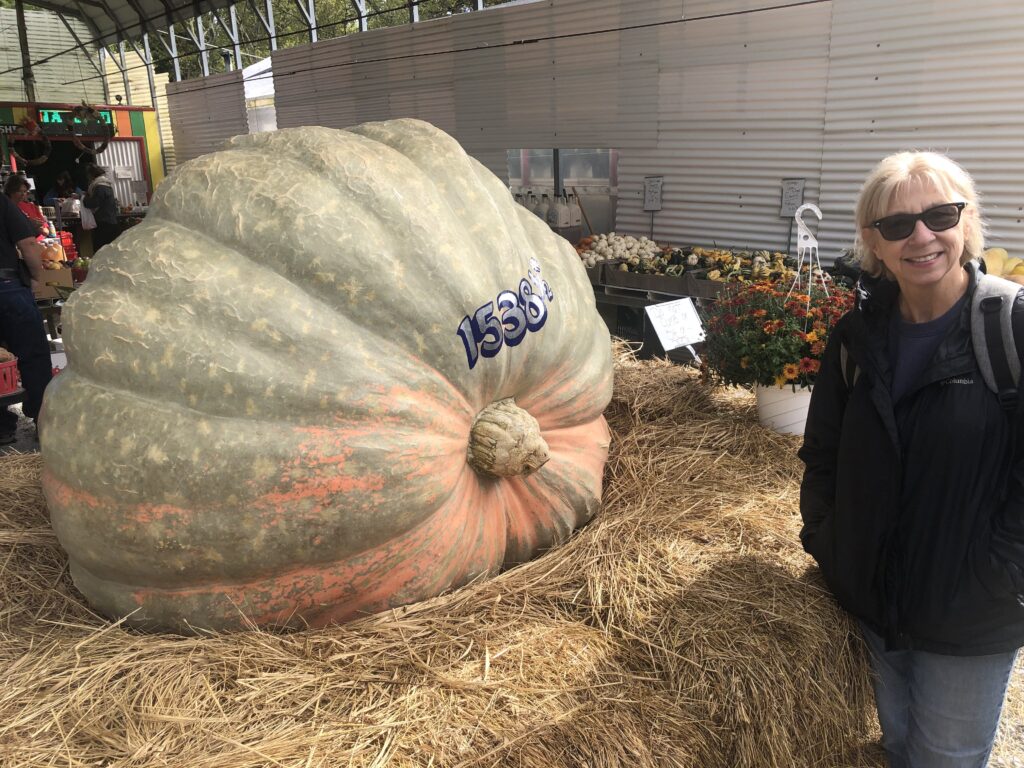
Although the tradition of carving a vegetable to make a lantern has its origins in Ireland and Scotland with carved turnips, Americans found pumpkins to be better for this purpose, and jack o’ lanterns were being carved by the mid 1800s.
Our beloved pumpkins are just one of many varieties of “winter squash,” including gourds, that were developed for different uses, such as cooking, canned preserves, carving fresh for seasonal decoration, dried as ornaments, and even the sponge-like “loofa” scrubber. All of these are the species Cucurbita pepo, the Latin pepo meaning “melon,” or Greek “pepon.” Native to US and Mexico, this isone of the oldest domesticated plants, appearing in cultivation between 9,000 to 7,000 years ago in what is now Mexico, and was an important part of the healthy, traditional diet relying upon corn, beans, and squash.

Today C. pepo is one of the most popular crops in the US as food and ornamentals. Conventional wisdom holds that certain forms are only produced by hybridizing different varieties, and the seeds of that special squash will not breed true to form: the farmer must hybridize the parental varieties again.

Flowers are either female or male, with the females generally appearing closer to the roots and the males further out on the vine, which grows rapidly to a length of 12 feet or more. Also, females have a swollen ovary that will become the fruit if pollinated, whereas males do not. Squashes are best pollinated by the specialist bee, Peponapis pruinosa, which is a solitary bee, with each female digging her own nest in the soil. Note that the genus name means “melon bee.” Male Peponapis often sleep in the blossoms at night. Certain other bees are effective, including bumble bees, but honey bees and many native bees are not as effective, or may not pollinate at all.

A pumpkin’s orange color comes from carotenoid pigments (named from carrots), which the body can use to make Vitamin A. For the edible varieties, all parts of the plant can be eaten, and the flowers are often considered a delicacy. While the flesh of a pumpkin is mostly water, the seeds are nutritious and often available commercially as “pepitas.” When fed to chickens, seeds are indicated to greatly improve the quality of eggs for human consumption. Global commercial production in 2020 was 28 million tons, with China in the lead at 7.4 million tons. USA produced about 1.1 million tons.

Recently, enthusiasts have been breeding giant pumpkins, a variety generally called Cucurbita maxima, which was developed simply to be very large. The flesh must be woody to support their weight, and they are not edible. World’s record is currently more than 2,700 pounds, grown in Italy in 2021.
Readers may enjoy looking for videos on the Web of the popular contest to see who can throw a pumpkin the farthest. Called “pumpkin chucking” this seasonal event in Delaware involves air cannons, catapults, slings, and other devices to cast a pumpkin a great distance without exploding it during the acceleration of the launch. According to Punkinchunkin.com, the current champion is the team called American Chunker Inc., which threw a pumpkin 4,694 feet in 2013. Separate from that contest, in 2010 an air cannon called “Big 10 inch” threw a pumpkin 5,545 feet in Utah.
